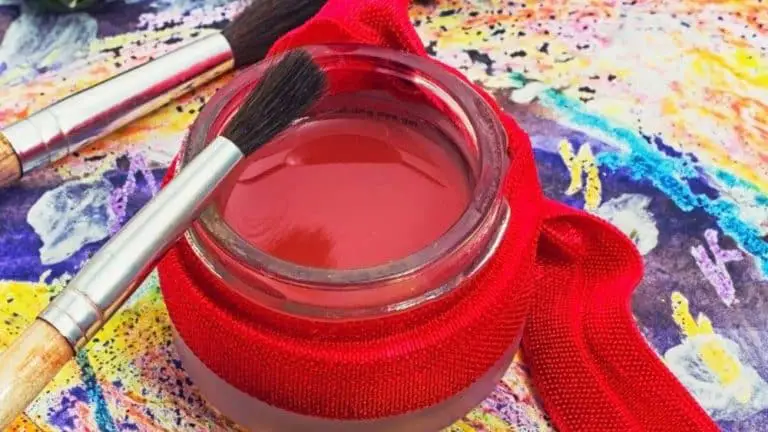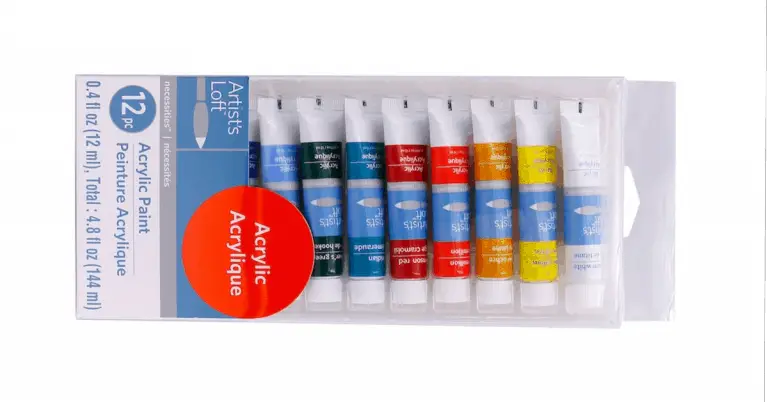Are Expensive Paint Brushes EVER Worth It? (For Artists)
It doesn’t matter if you are a long-time or beginning painter, when buying a paintbrush you’re always faced with the decision of if it’s worth it to pay extra for a more expensive paintbrush?
Buying a more expensive, higher-quality paintbrush is almost always worth the extra cost. A better quality paintbrush (i.e. more expensive) will give your finished artwork a cleaner more professional look while a cheap paintbrush will likely result in a sloppy, unfinished look.
The average art supply store carries dozens of different paintbrushes in what looks like unlimited sizes and shapes and it can be difficult to decide which ones to buy.
In this article, we’ll cover the different qualities of cheap vs. expensive paintbrushes, what to look for when buying a paintbrush, and how properly caring for your brushes makes a big difference in how long they last.

(This article may contain affiliate links and I may earn a commission if you make a purchase)
Are Expensive Paint Brushes Worth It?
Good quality brushes are highly recommended for almost every style of painting. Of course, the type of brush and bristle style will depend on what kind of paint you’re using (i.e. oil or water-based) and the surface you’re painting on.
Higher quality brushes will inevitably make the painting process much easier and makes the end result look more professional.
Quality brush bristles may be made out of natural animal hair, synthetic, or a mixture of both. Each type has different uses for different kinds of paint.
For instance, natural brushes are excellent for oil-based paint, but they work poorly with water-based colors. The good thing about a paint brush with synthetic bristles is that it works well with both oil-based and water-based colors!
Speaking of bristles, quality brush bristles will be made of several lengths that taper near the end, and the tips should be fuzzy. This feature allows the tip of your paintbrush to hold more paint and should result in a more aesthetically pleasing finish.
The ferrule (the metal strap that holds your paintbrush together) in a quality paintbrush is generally made of a non-corrosive material. It will also be a tight fit, securely holding the bristles to the brush handle.
Whether you are an experienced painter or a novice, using the best tools will allow you as an artist to paint to your highest potential.
The Problem With Cheap Paintbrushes
It doesn’t matter how good of an artist you are. Cheap and low-quality paintbrushes will make your work look mediocre, if not poor.
The problem with low-quality paintbrushes is that they mostly have synthetic bristles made from Nylon, which are known for their poor ability to hold enough paint on their tips. As a result, your painting will look blotchy and streaky.
Furthermore, the ferrule will not be tight enough in cheap paintbrushes. This means that the bristles will start to fall out and end up ruining your painting. It’s hard to paint a detailed image with stray bristles poking out at odd angles.
A cheap paintbrush will only suit your needs when applying glue or paint that doesn’t require a neat or fine finish.
It’s safe to say that when it comes to creating art, low-quality paintbrushes will do you more harm than spending a few extra bucks for a better brush.
Why Should You Avoid Cheap Paintbrushes?
There are quite a few reasons why you should choose a good-quality paintbrush for your art project. Most problems that are associated with cheap paintbrushes will only surface once you have already begun your painting. Although it would then be too late to quickly run to the store again, learning how to avoid cheap paintbrushes are the first step!
Cheap Paint Brushes Have Loose Bristles
Loose bristles can be incredibly frustrating when trying to create an artistic painting. You might try to paint, but rogue brush bristles keep getting stuck in the wet paint. You might try to fish them out with your fingers, only now leaving your fingers covered in paint—what a mess and loss of both time and energy.
A cheap brush will also shed bristles on your painting surface, leaving you with a blotchy finish.
Low Quality Paintbrushes Are Stiff
If you have painted with a high-quality paintbrush before, you know that the texture of the tip is smooth and soft, almost feeling like fine hairs. This is because they are mostly natural, creating a strong contrast to the synthetic bristles of cheap brushes.
A synthetic brush is stiff, with their bristles causing highly visible strokes on your painting surface. You will need to apply multiple layers of paint to fill in the gaps. The bristles may also be bent and out of shape, which will cause paint to be applied in areas you didn’t want.
Inexpensive Brushes Will Need to Be Replaced Regularly
Like all cheap products, cheap paintbrushes can’t be expected to last long. They have a short lifespan, so a cheap brush will need regular replacement, which is not ideal for you or your wallet, especially if you like painting.
Whether your brush has an unstable handle (loose ferrule), an unpointed tip, or loosening bristles, your brush will break apart sooner than you would expect it to.
It could be easy to get tricked by budget-friendly paint brushes. They will seem like a good idea at the start, but you will end up paying double while using an inferior product overall.
Things To Look For When Buying A Paint Brush
A set of sable brushes like these are ideal for use with oil, watercolor, and acrylic paint (Amazon).
Since we’ve determined that top-quality brushes produce a better result, it is of utmost importance to find the best brush for the job! Below are a few steps you can go through when you stand in front of what seems like unlimited choices of paintbrushes at the art supply store:
Match the Bristle Material to the Finish
As mentioned, synthetic bristle brushes are usually made from Nylon or a blend of polyester and nylon. These brushes are the best for water-based latex paints. This is because natural bristle brushes will soak up too much water and get soggy. Always use natural-bristle or blended brushes for oil-based paint and finishes.
Consider the Quality of the Brush
It would be best to thoroughly inspect the paintbrush you want to choose for your artwork. Look for tightly compacted bristles all the way through the ferrule that spring back when you gently bend them. In high-quality brushes, the bristle tips will always be split or “flagged,” this helps to produce a good release of the paint from brush to surface and gives a more continuous finish.
Another thing to check for when inspecting the bristles would be that the bristles themselves should range in length, enabling the brush head to come to a point for better detail.
Also, when you check your brush, slowly run your hand over the whole brush and pull gently. A quality brush will have very few, if any, bristles coming loose.
Check How Comfortable the Paintbrush Feels in Your Hand
A good paintbrush should always feel comfortable in your hand. When you’re holding the paintbrush, pretend like you’re painting. Try to get an accurate feel of how the brush balances in your hand and how easily you can control each stroke.
Caring For Your Paintbrushes Makes A Difference!
While an expensive paintbrush will make all the difference in your artwork, even an expensive brush will need to be replaced frequently if you do not care for it correctly. When you care for your paintbrushes, they will stay usable and benefit you for the longest time possible.
A pricey paintbrush will get even more expensive if you have to replace it regularly.
It is best to consider the right brush for the right paint type. This includes things like using an oil paintbrush for a watercolor project and vice versa. Using a paintbrush only for its intended purpose and medium will make it last longer.
If you don’t do this, the bristles of your brush will get completely ruined after only a few uses, and you will have wasted the money, time, and effort you have put into the painting.
It is also a good idea to keep your brush wet. As long as you are painting and working on the project, keep your brush wet without giving it time to dry out completely. If you find yourself taking a break, you may wet your brush completely to make sure that it retains its moisture.
You may also choose to simply drop it in a cup of water or seal it in a plastic bag (depending on the type of paint your using). Letting your brush dry out completely and wetting it again with paint will cause the bristles to wear out much faster than they should, no matter the quality.
A brush cleaner and preserver, like this one from Amazon, will help keep your brushes in tip-top shape.
It is crucial always to clean your brushes thoroughly. If you find your paintbrushes stiff and dry when you’re about to start to paint, it is a sign that you hadn’t cleaned it well when you finished painting previously. Your brush must be 100% empty of paint before storing it or letting it sit for longer periods.
You can make sure that your paintbrush is 100% clean by bending the bristles gently and spreading them around in the water or cleaning solution to get the paint out. A lot of paint will be hiding in the ferrule, so make sure you flip the brush and remove the paint from every nook and cranny.
After cleaning the brushes, move the bristles around and check the brush to ensure they are effectively cleaned.
Lastly, it is always good to store the paintbrushes in their case or covers after using them. Most paint brush sets come in a case that will keep your brushes in good shape between projects.
These cases help your brush’s bristles to stay in their original form so that they don’t bend or come loose. If you are putting away your brushes for a longer period, keeping them in their custom case will ensure they stay in their original working shape.
Using a paint brush rinse cup designed to clean your brush can be a worthwhile investment (Amazon).
Conclusion
Paying extra for a good quality paintbrush is almost always worth it. As long as you properly care for your brush, it should last a long time.
A good paintbrush is an easy brush to clean, yet it holds paint well without losing its original shape. Most importantly, a good paintbrush is a brush that is comfortable and easy to use. Only when a paintbrush has all these qualities will it be one worth buying and using.
Expensive paintbrushes are definitely worth it, especially if you are a beginning painter. They are not only a good investment due to how long they last, but you will have more fun learning while painting.
More From Artistry Found
- Artist’s Loft Acrylic Paint Review (Are They Any Good?)
- Is Acrylic Pouring Expensive? (Let’s break it down)
- 17 Creative Gifts for the Painter in Your Life
- Discover What Color Paintings Sell Best (Attn: Artists!)
Resources
http://www.monvoir.com/blog/2015/10/15/why-is-it-so-expensive









